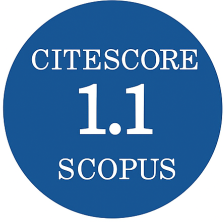Design and Validation of a Low Frequency Anti-Vibration Mount using NBR-Carbon Fiber Composite
DOI:
https://doi.org/10.3849/aimt.01967Keywords:
vibration isolation, composite anti-vibration mount, transmissibility, nitrile rubber, low-frequency mount, finite element modeling, creepAbstract
The vibrations generated by onboard machinery can adversely impact stealth of marine platforms. Designers typically mitigate the source of vibration; however additional passive anti-vibration mounts have to be used for isolating equipment above a specific frequency threshold. This study focuses on the development, testing, and comparative evaluation of composite anti-vibration mounts incorporating short carbon fiber reinforcement in an NBR matrix. Three damping elements designs were optimized based on the stress-strain properties of five NBR compositions with varying short-fiber loading. The research involved designing and testing the mounts, FEM of the materials, FEA of the mounts, and experimental validation. Among the tested designs, model-2 with 2 parts per hundred rubber (phr) fiber loading demonstrated superior vibration damping performance for low-frequency applications.
References
LU, X., X. LI, and M. TIAN. Preparation of High Damping Elastomer with Broad Temperature and Frequency Ranges Based on Ternary Rubber Blends. Polymers for Advanced Technologies, 2014, 25(1), pp. 21–28. https://doi.org/10.1002/pat.3199
CORSARO, R.D, and H. SPERLING, eds. Sound and Vibration Damping with Polymers. Washington: American Chemical Society, 1990. ISBN 0-8412-1778-5
WU, C.F., Y. OTANI, N. NAMIKI, H. EMI, K.H. NITTA and S. KUBOTA. Dynamic Properties of an Organic Hybrid of Chlorinated Polyethylene and Hindered Phenol Compound. Journal of Applied Polymer Science, 2001, 82(7), pp. 1788–1793. https://doi.org/10.1002/app.2021
VARGHESE, H., T. JOHNSON, S.S. BHAGWAN, S. JOSEPH, S. THOMAS and G. GROENINCKX. Dynamic Mechanical Behavior of Acrylonitrile Butadiene Rubber/Poly(ethylene-co-vinyl acetate) Blend. Journal of Polymer Science, Part B, 2002, 40(15), pp. 1556–1570. https://doi.org/10.1002/polb.10204
PETROSIAN, L.G. Vibration Damage and Vibration Control Measures. In: Dynamics of Structures. Cham: Springer, 2024, pp. 535–548. https://doi.org/10.1007/978-3-031-63539-7_20
KOROBIICHUK, I., V. MEL’NICK, V. KOSOVA, V. PAVLENKO and K. BURSACOV. Study of Systems of Active Vibration Protection of Navigation Instrument Equipment. Applied System Innovation, 2024, 7(5), 95. https://doi.org/10.3390/asi7050095
VU, M.H., N.P.V. BACH, T.N. LUONG and T.B. TRUNG. Kinematics Design and Statics Analysis of Novel 6-DOF Passive Vibration Isolator with S-Shaped Legs Based on Stewart Platform. Journal of Vibroengineering, 2023, 26(1), pp. 66–78. https://doi.org/10.21595/jve.2023.23511
REN M., X. XIE and Z. ZHANG. Investigation on a New Passive Active Vibration Isolator. In: 26th International Congress on Sound and Vibration. Montreal: ICSV, 2019, pp. 7–11
CHAI Y., J. BIAN and M. LI. A Novel Quasi-Zero-Stiffness Isolation Platform via Tunable Positive and Negative Stiffness Compensation Mechanism. Nonlinear Dynamics, 2024, 112(1), pp. 101–123. https://doi.org/10.1007/s11071-023-09018-0
CHANDRAMOHAN, S., M. VAITHIYANATHAN, B.C. CHAKRABORTY and M.M. DHARMARAJ. Synergistic Effect of Graphene and Carbon Black on the Mechanical and Vibration Damping Characteristics of Styrene-Butadiene Rubber. Iranian Polymer Journal, 2025, 34, pp. 17–27. https://doi.org/10.1007/s13726-024-01349-y
JAISWAL P. and S. BARVE. Utilization of Composite Materials for Engine Mounts & Different Vehicle Structures: A Review. AIP Conference Proceedings, 2022, 2421(1), 040007. https://doi.org/10.1063/5.0078199
SURYATAL B.K., P.K. AMBADEKAR, J.S. GAWANDE, K.A. MAHAJAN, V.K. JAVANJAL, M.M. SONEKAR, R.N. YERRAWAR and S.H. GAWANDE. Deflection Prediction of an Anti-Vibration Mount by Finite Element Analysis. Mathematical Modelling of Engineering Problems, 2024, 11(6), pp. 1452–1456. https://doi.org/10.18280/mmep.110606
CHAKRABORTY, B.C. and D. RATNA. Polymers for Vibration Damping Applications. New York: Elsevier, 2020. ISBN 0-12-819252-6
AKANDE, I.G., M.A. FAJOBI, O.A. ODUNLAMI and O.O. OLUWOLE. Exploitation of Composite Materials as Vibration Isolator and Damper in Machine Tools and Other Mechanical Systems: A Review. Materials Today: Proceedings, 2021, 43(2), pp. 1465–1470. https://doi.org/10.1016/j.matpr.2020.09.300
ABHILASH, S.S. and D.L. SINGARAVELU. Effect of Fiber Content on Mechanical, Morphological and Vibration Damping Characteristics of Natural Fiber-reinforced Composite Fuel Tanks. Journal of Natural Fibers, 2022, 19(16), pp. 14994–15007. https://doi.org/10.1080/15440478.2022.2069629
PIERSOL, A.G. and T.L. PAEZ. Harris’ Shock and Vibration Handbook. 6th ed. New York: McGraw-Hill Companies, 2010. ISBN 978-0071508193
ZHAO, W.L., Y. LIU, Z.C. DONG and X.J. YU. Establishment of Strain Rate‐dependent Intrinsic Models for Short‐Cut Carbon Fiber/Nitrile Composites in Different Pyrolysis States. Polymer Composite, 2024, 45(9), pp. 8321–8334. https://doi.org/10.1002/pc.28343
CHUNG, D.D.L. Review Materials for Vibration Damping. Journal of Materials Science, 2001, 36, pp. 5733–5737. https://doi.org/10.1023/A:1012999616049
SHAJAHAN, K., R.S. ARUN SUNDAR, T. BEJOY and A.V. RAMESH KUMAR. Composite Anti-Vibration Mount with Improved Elastomeric Composite Stack for Enhanced Low-Frequency Damping. Indian Patent (Filed). Application No. 202411075627, 2024
SHAJAHAN, K., R.S. ARUN SUNDAR, A.V. RAMESH KUMAR and J. REJI. Investigations on Short Carbon Fibre Filled NBR Composites for Fabrication of Low Frequency Vibration Isolator. Accepted for publication in Defence Science Journal, 2025
ASTM D3580: A Standard for Vibration Test of Products [online]. [viewed 2024-11-09]. Available from: https://1url.cz/8JMkV
Rubber, Natural and Synthetic – General Test Methods; Carbon Black [online]. In: Annual Book of ASTM Standards. 2018, 09:01 [viewed 2024-11-20]. Available from: https://store.astm.org/astm-bos-09.01.html
Rubber Products, Industrial – Specifications and Related Test Methods; Gaskets; Tires [online]. In: Annual Book of ASTM Standards. 2018, 09:02 [viewed 2024-11-20]. Available from: https://store.astm.org/astm-bos-09.02.html
BROWN, R. Physical Test Methods for Elastomers. New York: Springer, 2018. ISBN 3-319-66726-2
TREVISO, A., B. VAN GENECHTEN, D. MUNDO and M. TOURNOUR. Damping in Composite Materials: Properties and Models. Composites Part B: Engineering, 2015, 78(1), pp. 144–152. https://doi.org/10.1016/j.compositesb.2015.03.081
GEETHAMMA, V.G., G. KALAPRASAD, G. GROENINCKX and T. SABU. Dynamic Mechanical Behaviour of Short Coir Fibre Reinforced Natural Rubber Composites. Composites Part A: Applied Science and Manufacturing, 2005, 36(11), pp. 1499–1506. https://doi.org/10.1016/j.compositesa.2005.03.004
TONG, X, Z. BAI and J. WU. Mechanical and Tribological Performance of Acrylonitrile‐Butadiene Rubber/ Carbon Black/ Crypto Crystalline Graphite Composites. Journal of Applied Polymer Science, 2021, 138(9), 49936. https://doi.org/10.1002/app.49936
ZHAO, F. and R.J. FRANK. Thermal Loading of Short Fibre Composites and the Induction of Residual Shear Stresses. Composites Part A: Applied Science and Manufacturing, 2007, 38(11), pp. 2374–2381. https://doi.org/10.1016/j.compositesa.2007.06.012
GLOWACKA, K., J. KLEMENC, M. NAGODE and T. LAGODA. Fatigue Lifetime of Rubber Composites–State-of-the-Art. Polymer Testing, 2025, 143, 108713. https://doi.org/10.1016/j.polymertesting.2025.108713
GOMEZ-JIMENEZ, S., T. SAUCEDO-ANAYA, C. GUERRERO-MENDEZ, A. ROBLES-GUERRERO, L. SILVA-ACOSTA, D. NAVARRO-SOLIS, D. LOPEZ-BETANCUR and A.R. CONTRERAS RODRÍGUEZ. Mooney-Rivlin Parameter Determination Model as a Function of Temperature in Vulcanized Rubber Based on Molecular Dynamics Simulations. Materials, 2024, 17(13), 3252. https://doi.org/10.3390/ma17133252
MARCHMANN, G. and E. VERON. Comparison of Hyperelastic Model for Rubber like Materials. Rubber Chemistry and Technology, 2006, 79(5), pp. 835–858. https://doi.org/10.5254/1.3547969
BHARAT, P.S., S.B. BARVE, S.G. THORAT and S.S. MAJUMDAR. Design and Analysis of Anti-Vibration Mount for G+3 Elevator. International Journal of Current Engineering and Technology, 2014, 3, pp. 103–108. ISSN 2277-4106
ISO 10846-1. Acoustics and Vibration – Laboratory Measurement of Vibro-Acoustic Transfer Properties of Resilient Elements – Part 1: Principles and Guidelines
FODOR, B. and A. KOSSA. Stability Study of the Compressible Mooney-Rivlin Hyperelastic Model. Journal of Strain Analysis for Engineering Design, 2024, 59(4), pp. 258–268. https://doi.org/10.1177/03093247241233712
LI, K., G. CHEN, W. SUN, S. YAN, M. LI and B. LIU. Research on the Strength Calculation Method of Rubber Mount Housing for Heavy Truck Powertrain. SAE Technical Paper Series, 2024. https://doi.org/10.4271/2024-01-5080
WANG W., C. SONG and X. LI. Finite Element Simulation Analysis of Static Stiffness of Bushing Rubber Mount. In: Third International Conference on Advanced Manufacturing Technology and Manufacturing Systems. Changsha: SPIE, 2024, pp. 978–982. https://doi.org/10.1117/12.3038287
LI, Q., T. TANG, G. HE, M. YUAN and G. LI. Fatigue Life Prediction of a Rubber Mount Considering the Self-Heating by the Hysteresis Loss of the Rubber Material Subjected to Cyclic Loadings. Journal of Macromolecular Science, Part B, 2024, pp. 1–16. https://doi.org/10.1080/00222348.2024.2393517
Downloads
Published
Issue
Section
Categories
License
Copyright (c) 2025 Advances in Military Technology

This work is licensed under a Creative Commons Attribution-NonCommercial 4.0 International License.
Authors who publish with this journal agree to the following terms:
1. Authors retain copyright and grant the journal right of first publication with the work simultaneously licensed under a Creative Commons Attribution License that allows others to share the work with an acknowledgement of the work's authorship and initial publication in this journal.
2. Authors are able to enter into separate, additional contractual arrangements for the non-exclusive distribution of the journal's published version of the work (e.g., post it to an institutional repository or publish it in a book), with an acknowledgement of its initial publication in this journal.
3. Authors are permitted and encouraged to post their work online (e.g., in institutional repositories or on their website) prior to and during the submission process, as it can lead to productive exchanges, as well as earlier and greater citation of published work.
Users can use, reuse and build upon the material published in the journal for any purpose, even commercially.






